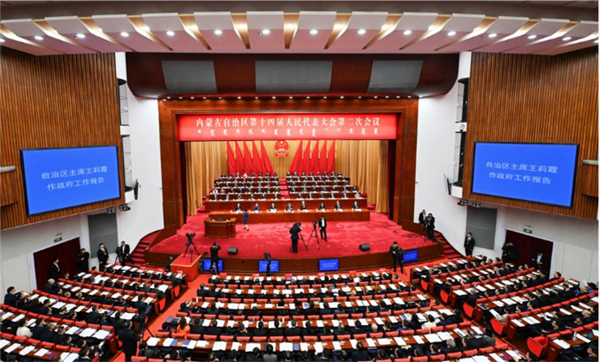Annual session of Inner Mongolia Autonomous Regional People's Congress kicks off

The second session of the 14th Inner Mongolia Autonomous Regional People's Congress is held in Hohhot on Jan 30. [Photo/Inner Mongolia Daily]
The second session of the 14th Inner Mongolia Autonomous Regional People's Congress commenced in Hohhot, capital of North China's Inner Mongolia autonomous region, on Jan 30.
The main agenda of the session includes listening to and deliberating on the government work report, the work report of the Standing Committee of the Inner Mongolia Autonomous Regional People's Congress, and the work reports of the Inner Mongolia Autonomous Regional People's Procuratorate and Inner Mongolia Autonomous Regional Higher People's Court.
Additionally, the "Draft Amendments to the Legislative Regulations of the Inner Mongolia Autonomous Regional People's Congress and Its Standing Committee" will be reviewed and elections will be conducted.
According to the Inner Mongolia autonomous regional government work report, in 2023, Inner Mongolia's GDP reached 2.46 trillion yuan ($336.99 billion), a growth rate of 7.3 percent.
It surpassed the initial annual target by 1.3 percentage points and exceeded the national average by 2.1 percentage points, ranking third in the country in terms of growth rate.
The main targets for economic and social development in 2024 are as follows: a GDP growth of over 6 percent; an increase in the added value of industries above a designated size of around 7 percent; and a growth in fixed asset investment of approximately 15 percent.
In addition, according to the targets, general public budget revenue growth should be around 5.5 percent on a comparable basis, and over 180,000 new urban jobs should be created, with an urban surveyed unemployment rate of around 6 percent.
Furthermore, Inner Mongolia hopes to achieve growth in residents' incomes that matches economic growth, to keep the consumer price growth around 3 percent; and to reduce energy consumption per unit of GDP by around 1.6 percent.



 Print
Print Mail
Mail


